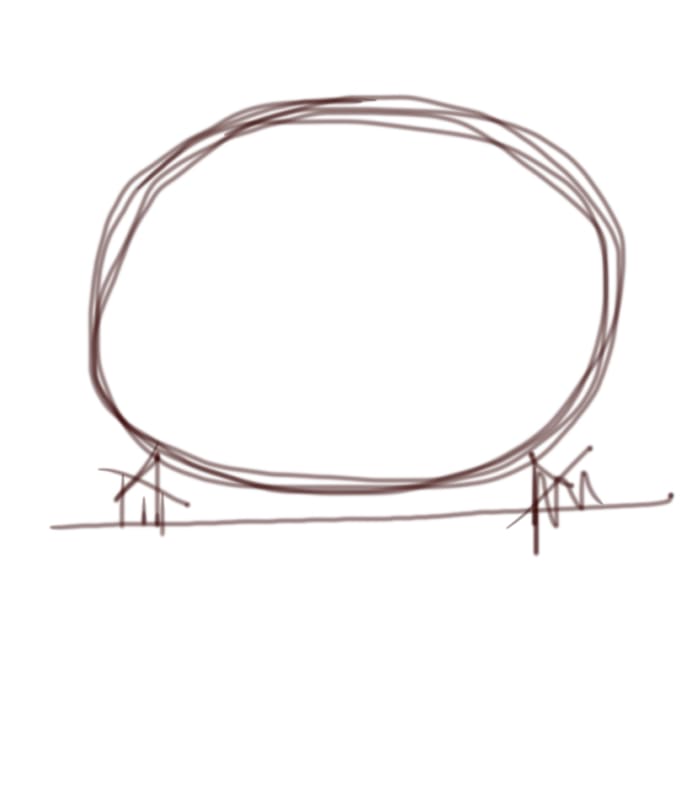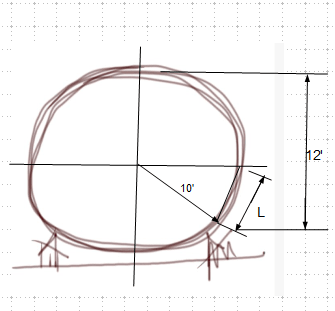I am designing a structural steel art structure for exterior application. The structure is a relatively large steel circle (almost a full circle) anchored to a sub-surface concrete foundation. The architectural intent is to create a giant letter "O" with the base cut-off underground. The architect would like 500mm (20") wide x 20mm (3/4") thick steel plate. It will be powder-coated. The maximum span at the two extreme tangents is roughly 20 feet. The height is around 12 feet. It's not a perfect circle. The plate supports self-weight, snow, wind and other loads attributed to exterior art applications, but nothing very high. It is essentially a barrel arch with 500mm (20") length with a modified geometry that strays away from perfect arch geometry.
Can anyone suggest any good technical resources in guidelines or papers? AISC and ASCE have papers on stability and plate walls, but I don't think they apply here. A lot of shell/plate/membrane papers are for thicker concrete art structures which have their own nuances. I intend on analyzing with FEA for strength and serviceability, both in-plane and out-of-plane, but I would like additional focused information on global and local stability and other good tips. Slenderness checks are of importance here because there are areas of compression and tension, but effective lengths from codes and standards are likely not applicable to this type of structure. A detailed guideline or paper would be great.
Thank you.
M.
Can anyone suggest any good technical resources in guidelines or papers? AISC and ASCE have papers on stability and plate walls, but I don't think they apply here. A lot of shell/plate/membrane papers are for thicker concrete art structures which have their own nuances. I intend on analyzing with FEA for strength and serviceability, both in-plane and out-of-plane, but I would like additional focused information on global and local stability and other good tips. Slenderness checks are of importance here because there are areas of compression and tension, but effective lengths from codes and standards are likely not applicable to this type of structure. A detailed guideline or paper would be great.
Thank you.
M.


